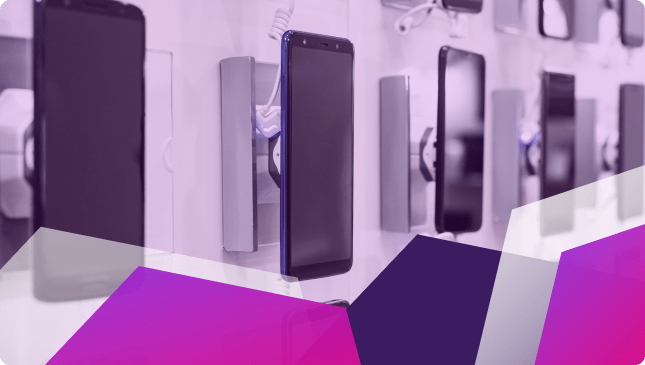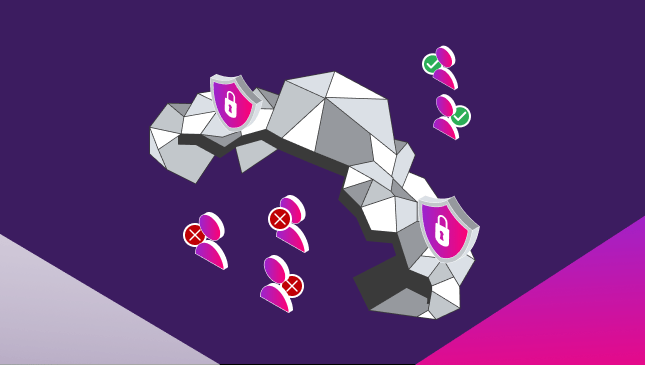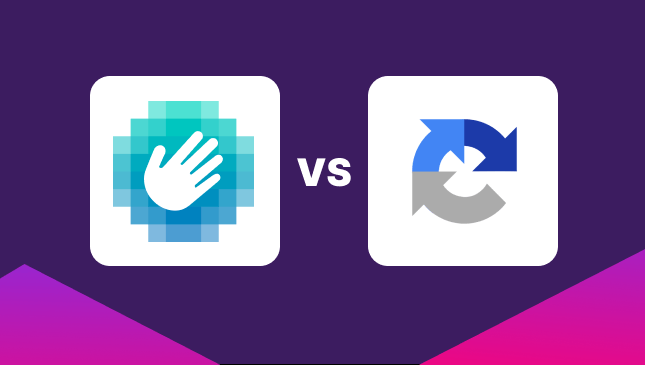Bot Farms: What Are They & What Are They For?
Sanja Trajcheva
|Cyber Risks & Threats | June 06, 2023

The demand for online traffic has spawned an entire industry for bot traffic. And the best way to generate bot traffic in bulk is to use a bot farm.
But why is there such a demand for this form of fake traffic? What is a bot farm, and what is it used for?
And perhaps more importantly, how do bot farms affect you as a business owner, and what can you do about it?
What is a bot farm?
Bots are a system of scripts or software designed to click automatically. They are programmed to generate IP addresses and web sessions and interact with various online features. A bot farm is a collective of these bots, which may or may not be in the same physical location.
Often, a bot farm will consist of a large bank of smartphones or tablets connected by a controlling device. They will then carry out repetitive tasks, usually engaging with social media, viewing videos, or simply visiting websites to boost traffic.

These farms are built to serve people and organizations looking to buy bot traffic and fake clicks.
We did a full investigation into click farms right here.
Over the years, bot farms have become more advanced so that they are not just simple scripts. Instead, they’ve evolved in intelligence, scale, and cunning and now have dedicated infrastructure with servers, multiple computers, and routers.
The result? They are more effective at generating fake clicks and harder to differentiate from real human users.
The increased sophistication and number of bot farms are partly because more people want to buy bot clicks to boost their online traffic. As demand grows, the number of bot farms and fake clicks will also rise.
What’s the difference between bot farms and click farms?
Bot farms are essentially a form of click farms. The classic image of a click farm is of a large room full of people carrying out repetitive tasks on computers. However, these days, a click farm might actually be a bot farm or could even be remote workers using paid-to-click (PTC) sites.
These workers are often paid based on how many clicks they perform, which is, as you might have guessed, usually very low paid. Bots can, of course, conduct many more clicks, but humans will be able to bypass security such as captchas or bot filters.
There isn’t much difference between click and bot farms in the actual work done. They both generate fake clicks for many reasons, including click fraud and ad fraud.
Why are bot farms a thing?
Both farms exist solely for profit. Every time bots execute Google Ads fake clicks, someone profits. The same goes for social media clicks and follows and streaming views.
Here are a few ways that people use bot farms.
Social media follows, likes, and comments.
This is a huge market as people spend six to seven figures annually to buy bot clicks on social media. Bots like and follow accounts to lend more credibility and make specific accounts more popular. One bot farmer estimates that there are up to 45 billion bot accounts on Instagram alone.
Twitch/YouTube streams
Streamers’ profits are directly related to the number of views they get. Naturally, they buy traffic bots to increase their views and draw in more advertisers. These are known as view bots.
PPC clicks
Clicking on PPC ads will drive up a marketer’s ad spend, making the ad platform more money. Fraudulent clicks on some PPC campaigns go as high as 60%.
Website Traffic
Webmasters might buy traffic bots to increase their site’s visitors and get paid more for advertising. They may also monetize these fake clicks in other ways by charging for “quality backlinks,” for example.
Bot farm crackdown
As people continue to buy bot clicks, anti-bot measures have also increased. Social media platforms are cracking down on bot accounts, and advanced solutions are now available to protect your PPC ads.
Here are three noteworthy examples of the “war” against bot farms.
Fake Instagram purges
Instagram is constantly cracking down on fake followers and bot accounts. Over the years, there have been several purges during which the algorithm uses machine learning to identify and remove fake followers. The platform’s bot detection strategies are more sophisticated than ever, and now, these fake accounts‘ engagements and likes are also getting deleted.
However, that’s not to say that Instagram doesn’t still have a big problem with bot traffic. In fact, it’s still estimated that 10% of Instagram accounts are automated (i.e., bots).
Ukraine bot farm bust
In March 2022, the Ukrainian government destroyed five bot farms being used to spread misinformation and inspire panic among the citizens during the Russian invasion. During the raid, at least 100,000 online accounts, 100 GSM gateway devices, and close to 10,000 sim cards were discovered.
The bust gives some insight into how extensive the network of bot farms can be. They can run multiple accounts at any time, generating mind-boggling traffic.
Thai click farm
You’ve probably seen footage of the click farm bust in Thailand from 2017. Three Chinese nationals were arrested by Thai police, but not for actually operating the click farm, but for using unregistered SIM cards and illegally imported devices.
However, this became one of the most well-known images of the click farm and remained a common model for bot farm operators around the world.

What do bot farms mean for you
Hard-to-interpret analytics data
Marketers rely on data to make informed decisions and improve performance. But when half of your traffic is made of bots, it becomes tough to make sense of your reports and harder to improve your strategies.
The strain on your site resources
An increase in traffic means that your website now has to handle more requests at any given time, which is doubly damaging since the increased traffic won’t lead to increased revenue. Attackers use this same strategy during a layer 7 DDoS attack when they try to overwhelm your site resource.
Increase your PPC campaign budget
Google Ads fake clicks mean that your “visitors” will never make it to the sale. And with you paying for every click, your ad spend will rise while conversions remain stagnant. Is there anything more frustrating for a digital marketer?
Bad ad platform choices
People who buy traffic bots for their websites and platforms make it challenging for marketers to pick the best places to advertise. You never know if the traffic is from real users interested in your product or bots that will dump your cart and bounce.
What does bot activity look like?
If you advertised on a bot-infested website or have been exposed to fake Google Ads clicks, how can you know for sure? Here are four simple ways to tell.
Abandoned shopping carts
Users abandon their carts often; that’s why retargeting is crucial. But when you observe an unusually high bounce rate, something fishy may be happening.
High clicks, low conversions
Upticks in clicks could mean that your campaign is working. But if it’s followed by the same conversion numbers (or lower), bots might be involved.
New and unfamiliar sources of traffic
Is a large chunk of your traffic originating from a new area outside your target audience? If so, you should probably dig deeper (or do some bot blocking).
Another common sign of bot traffic is high volumes of spam comments or fake sign-ups. Spam bots are one of the many ways that bot farms are monetised – but they can be more than just an annoyance. Spambots can carry out serious attacks such as DDoS and SEO spam attacks.
How can you protect yourself from bot farms?
Although many ad networks, such as Google and Facebook, are always trying to combat bot traffic, their methods are not always the most effective.
This is because the ad giants want more traffic, which translates to more ad revenue. Their filters do block obvious fraud sources, but with fraudsters constantly innovating their fake click software, Google and co are usually playing catch up.
Read more about what is bot traffic and how to spot bot traffic in Google Analytics
When it comes to organic and direct bots, you’re on your own – which is why bot zapping is even more important.
Click fraud prevention tools like CHEQ Essentials have become an essential add-on to modern digital marketers. By using fraud-blocking filters that the ad platforms don’t (or refuse) to use, you can proactively stop bots and other forms of fake traffic on ads.
Whether this is on Google Ads or the display network, Facebook Ads, or Instagram Ads, CHEQ Essentials is the most effective tool to block bot farms and bot traffic.
And now you can also block bot traffic on your WordPress sites with Bot Mitigation from CHEQ Essentials too!











